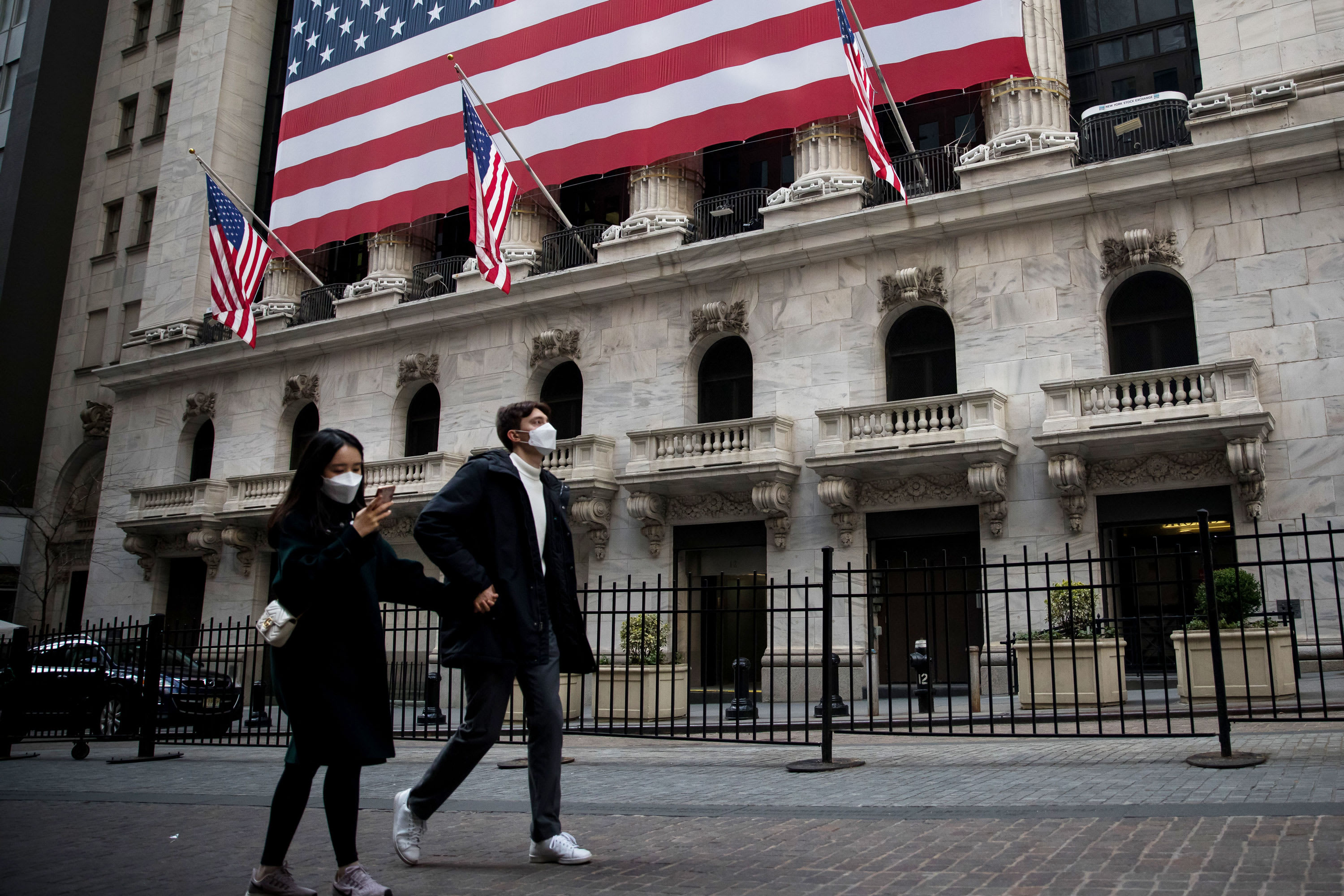
Pedestrians wearing face masks walk past the New York Stock Exchange in New York, on March 18, 2020.
Michael Nagle | Xinhua via Getty Images
There were two important economic events on Thursday. The government reported that 6.6 million Americans filed for unemployment, an all-time record. And the Federal Reserve announced a new program to flood the economy and financial markets with $2.3 trillion in liquidity — including buying up junk bonds from debt-laden companies.
Which one moved the market? The Fed move, driving the Dow Jones Industrial Average up 500 points by midday.
The market jump, unemployment surge and Fed rescue efforts all converged to form a new split in the economy, between the asset-rich and the rest of America.
Much like the early days of the financial crisis recovery, the wealthy (or the top 10% who own more than 85% of the stocks and financial assets) were quickly saved by the Federal Reserve and Congress.
In 2009, the stock market jumped more than 50% from its low, thanks to the TARP program and other Fed and government support. It took the rest of American almost a decade to recover lost wages and their home values.
The diverging fortunes of the haves and have-nots led to a massive, post-crisis backlash against the wealthy. It gave rise to the Occupy Wall Street Movement, the Tea Party, anti-establishment politicians and a roaring debate over inequality.
Now, while the root cause of the crisis is vastly different, and no one is talking about greedy sub-prime bankers who brought the trouble on themselves, the coronavirus and response is likely to lead the country down a similar anti-elite path.
The Federal Reserve actions, which help corporate balance sheets, banks and investors in everything from souring commercial loans to equities, provided an instant lifeline to asset owners. The Fed and Congress say the goal is to help the average American with small-business loans, stronger unemployment insurance and $1,200 checks. And those programs will help. More funding for small businesses and the least fortunate may be on the way, as Congress debates a fourth stimulus package.
Yet the small-business loans and checks have yet to reach large numbers of Americans. Big corporations and large investors are much better equipped to take advantage of government programs and better able navigate the bureaucracy. And small businesses and households represent a smaller proportion of the total spending.
“By plugging corporate balance sheets, you’re not making Americans whole,” said billionaire tech investor Chamath Palihapitiya said on CNBC. “Buying illiquid assets off the balance sheets of banks doesn’t make us whole. It’s not doing anything for the average person.”
Palihapitiya estimates that only five to 10 cents of every dollar that’s being spent or guaranteed by the federal government is going to the average American.
“They are not going to help as many people as you think they are going to help,” he said. “All it’s doing is propping up asset prices.”
In short, the financial cure for the wealthy has worked instantly and effectively. Yet the same drug cocktail of Fed liquidity and supply-side stimulus from Congress has yet to reach Main Street.
The diverging prognoses could set the stage for an election year and post-election period of renewed anti-establishment voter sentiment and an energized debate over inequality and taxing the wealthy. You could call it Post-crisis Populism Part Two.
Even though Bernie Sanders and Elizabeth Warren are out of the Democratic race, some economists see a return to their proposals of a wealth tax and higher taxes on high earners. Especially as deficits soar and politicians look for added tax revenues to plug the budget holes.
“The pandemic is creating new fault lines — between those who can afford to stop working and those who can’t; those who are keeping their health insurance and those who are losing it,” said Gabriel Zucman, the University of California, Berkeley economist who advised Warren and Sanders on their wealth taxes. “If anything, I expect the discussion about inequality to be even more robust in the aftermath of this crisis.”
Leave a Reply